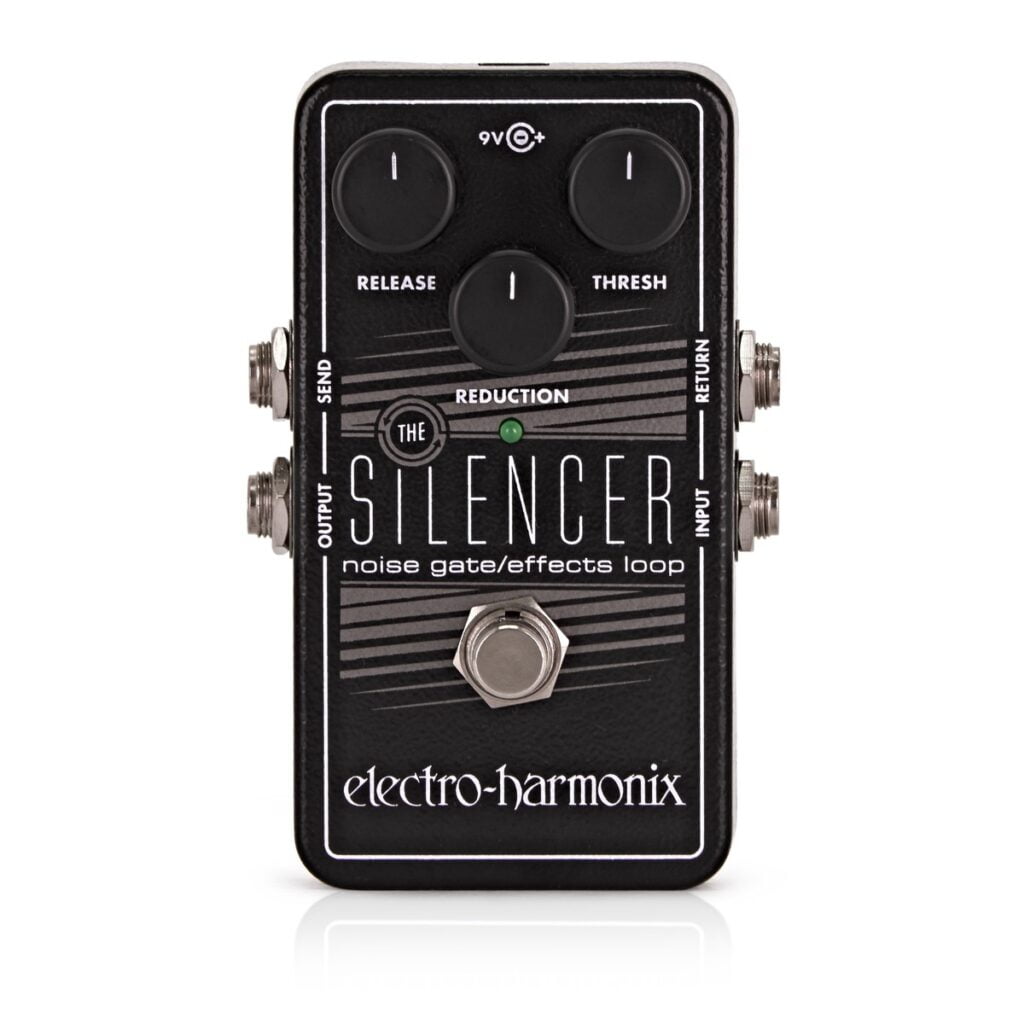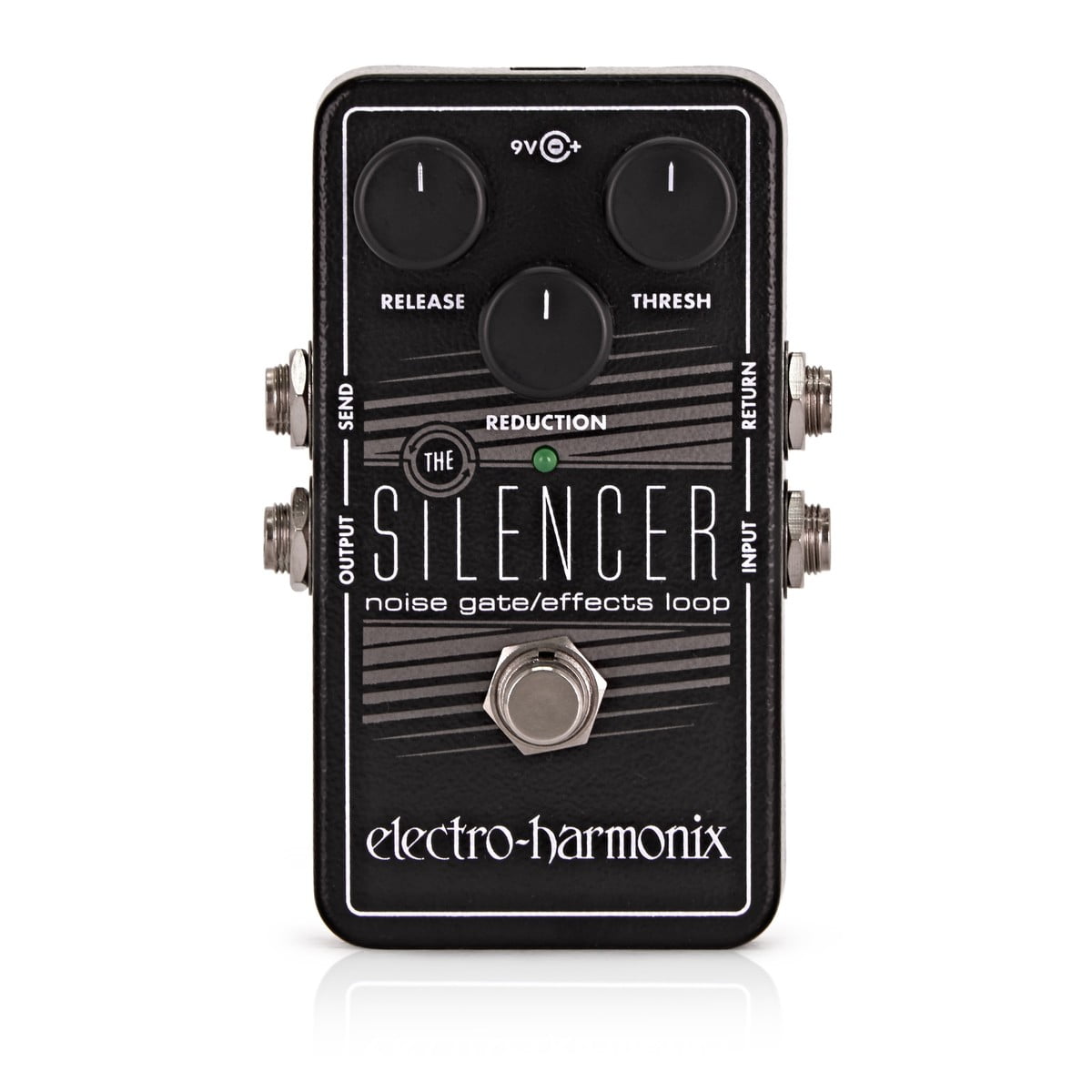
A “noise gate” is a tool used in audio processing that helps eliminate unwanted noise or hum from a signal chain, especially prevalent in high-gain settings or when using distorted guitar tones. It functions by letting the signal pass through only when it reaches a certain volume threshold, effectively cutting off or reducing the signal when it falls below that level. This helps to silence or significantly diminish background noise, such as amplifier hiss, string noise, or other extraneous sounds, during pauses or when the guitar is not actively being played.
Purpose of a Noise Gate in a Guitar Setup
Reducing Unwanted Noise:
In high-gain settings, especially with overdriven or distorted tones, the guitar signal can inadvertently pick up and amplify background noise or hum. A noise gate helps to mitigate this issue by silencing the signal when it drops below the set threshold, effectively reducing unwanted noise during quiet moments.
Enhancing Note Clarity:
By eliminating extraneous noise, a noise gate can enhance the clarity and definition of the notes being played, particularly in situations where sustained notes or chords are essential. It allows the clean signal to stand out without interference from background noise.
Tightening Up a Rig:
For heavy rhythmic playing or palm-muted sections, a noise gate can help tighten up the overall sound by cutting off noise between chords or notes, resulting in a cleaner and more precise performance.
Placement in a Guitar Setup
A noise gate is typically placed in the signal chain after the guitar but before any time-based effects like delay or reverb and modulation effects like chorus or phaser. Placing it after the guitar ensures that it effectively deals with any noise introduced in the signal before it reaches subsequent effects or the amplifier.
Pedalboard Setup:
If using a noise gate pedal, it usually sits on the pedalboard, connected after the guitar and before other effects or the amplifier.
Rack-Mounted Effects:
In studio setups or larger live rigs with rack-mounted gear, noise gates can be part of a rack-mounted effects unit, placed in the signal path before other effects, the preamp, or the amplifier.
Conclusion
A noise gate serves as a valuable tool in a guitarist’s arsenal, especially in scenarios where noise from high-gain settings or distorted tones becomes an issue. It helps maintain a cleaner, more controlled sound by effectively managing unwanted noise without compromising the integrity of the guitar signal. Understanding its placement in the signal chain and how to set the threshold level according to the noise present in the setup can significantly improve the overall quality and clarity of the guitar sound.

